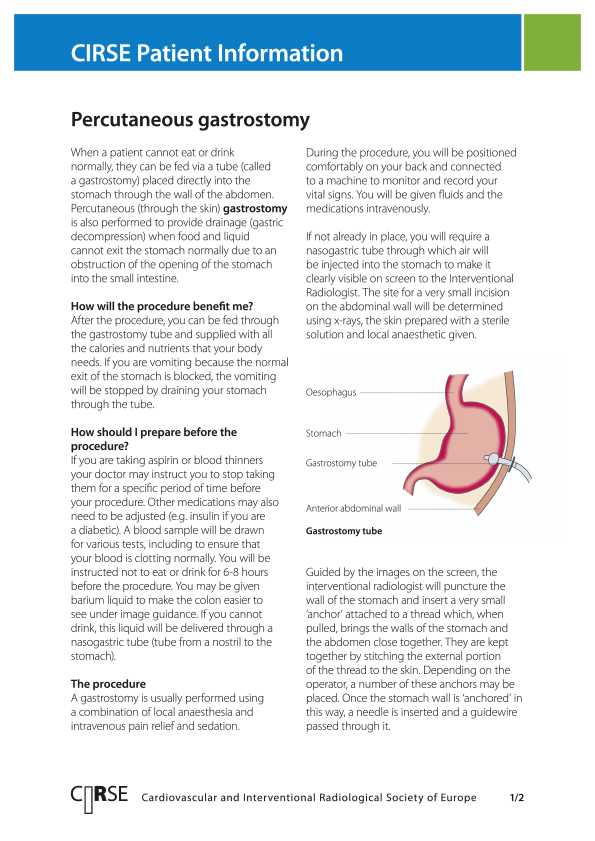Symptoms
Patients with gastroduodenal outlet obstruction may suffer from nausea and vomiting, weight loss and abdominal discomfort. This can severely affect your quality of life.
Diagnosis
Gastroduodenal outlet obstruction can be difficult to diagnose, as it has similar symptoms to a number of other conditions. However, imaging techniques can be used to help identify a gastroduodenal obstruction, including CT, MRI and endoscopy.
Treatment
The condition can be treated using surgery or interventional radiology, depending on the individual patient’s situation. It is often not possible to cure the condition by surgically removing the obstruction.
Surgical treatment consists of either removal of the tumour completely or connecting part of the stomach to the small intestine. This is called resection and anastomoses. The other surgical option is called gastrojejunostomy, or a bypass. As the name suggests, it creates a bypass around the obstacle. Here, a part of the small intestine is attached to the stomach near to the blockage so that the stomach can empty into the intestine. This is done when the tumour cannot be removed surgically. Sometimes surgical options are not always possible due to different factors.
Interventional procedures can provide other options. For patients suffering from cancerous obstructions that cannot be surgically removed, stents (small mesh tubes) placed via the gullet are a safe, palliative alternative. These procedures are performed either using fluoroscopic guidance alone or in combination with endoscopic guidance.

